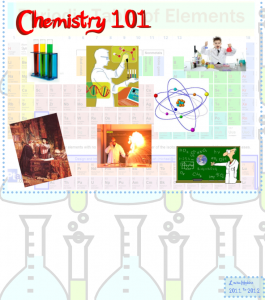It’s that time of year . . . time to get all our schoolwork wrapped up so we can present it to our high school counselor. It’s time to get credit for all the hard work we’ve done this school year!
Credit matters beginning with the 9th grade. Before then, there is no reason to obtain it, but there is every reason to get all the education you can, of course. Once your student is in the high school years, grades and credit matter, if they want to receive a high school diploma, or apply to a college (other than a community college that does not have academic entrance requirements.)
Not every school district is amenable to giving credit for homeschool work, but it is getting more common, as homeschooling and online courses becomes more and more popular. You may find it easier to work with charter schools or online schools, rather than traditional public schools. But if your child has done the work, he deserves the credit! If you find the schools in your area unwilling, you can always use an accreditation program that will grant credit for homeschool work that is acceptable to any high school, for a price. Because of the expense, I have never used them. I prefer to find a way to get the well-earned credit via the school system if possible.
It helps to develop a relationship with your high school counselor so that he knows you are trustworthy, that your family is serious about learning and will go above and beyond the requirements for the sake of real education. The first time we approached a high school counselor about getting credit, he was unfamiliar with it and it was “iffy”. The next child’s attempt was easier, and by the time my last child came in, work in hand, he knew we had a high standard, and he trusted us. My children enroll in high school for one or two classes, receiving credit for both their high school classes plus all those classes done in homeschool.
How do we prove we’ve done it? At the beginning of the school year or course of study, we create a notebook for each subject. Designing a “wow” cover page for the notebook helps it look professional, helps your student recognize which binder is which all year long, and having a notebook creates a learning record to refer back to. We buy those 3 ring binders with a clear front that allow you to slip in a sheet. If your student knows how to create a collage on the computer with a graphic design program (Gimp is free online), all the better! That is how Louisa made her Chemistry 101 notebook cover.
Inside the notebook, the first entry is the photocopied cover of the book we used (be it textbook or anything else we have chosen), plus the table of contents. As each chapter is read during the school year, the student checks it off on the table of contents pages. At the end of the year, when the entire textbook has been read, word for word, and checked off, it makes quite an impressive beginning to your student’s request for credit for each course!
After the cover and table of contents, put in a set of dividers and build the work behind each tab. For English, we include Grammar, Vocabulary, Spelling, Book Reports and Essays. If we have used a write-in workbook, that is tucked in the back. The notebook for our Chemistry DVD course this year (Chemistry 101) included these dividing tabs: Syllabus, Guidebook, Notes, Experiments, Reports and Quizzes.
When the notebook is presented, chock-full of a year’s worth of well-done work and quizzes with 100% scores, it is evident that the course has been fully-completed with an “A” grade. The only credit we ask for is “A” or “D.O” (do over). If there is an area of weakness or insufficiency, we ask for direction in how to “do over”. We’ve never yet been asked to do anything over, but that possibility always exists. Credit granted for work completed will go on the high school transcript, and be a helpful resource when it comes time to apply to college. How do we manage the 100% quiz scores? Learn the subject well. Re-take the quizzes as many times as necessary (different versions) until mastery occurs. That is what we were aiming at, right? Education! Mastery of the subject!
In my experience, the teacher or department head or counselor that reviews our notebooks is very impressed with the amount of work completed! One English department head confided to me that he would be thrilled if his students did 1/10 the writing that we had done. If you do your work thoroughly, your notebook will speak for itself and credit will be granted.
Often my student will be asked by those granting credit, “Wow! Did you really read the entire textbook?” when viewing one of their science notebooks with the very long, multi-paged table of contents (Apologia science) all checked off. Or the table of contents from the entire 11 book series of The History of US. It is gratifying to hear my teen answer with a resounding, confident “Yes!”
You might enjoy:
 The History of US |
 Apologia Science books |
 Curriculum Kits |



Comments on this entry are closed.